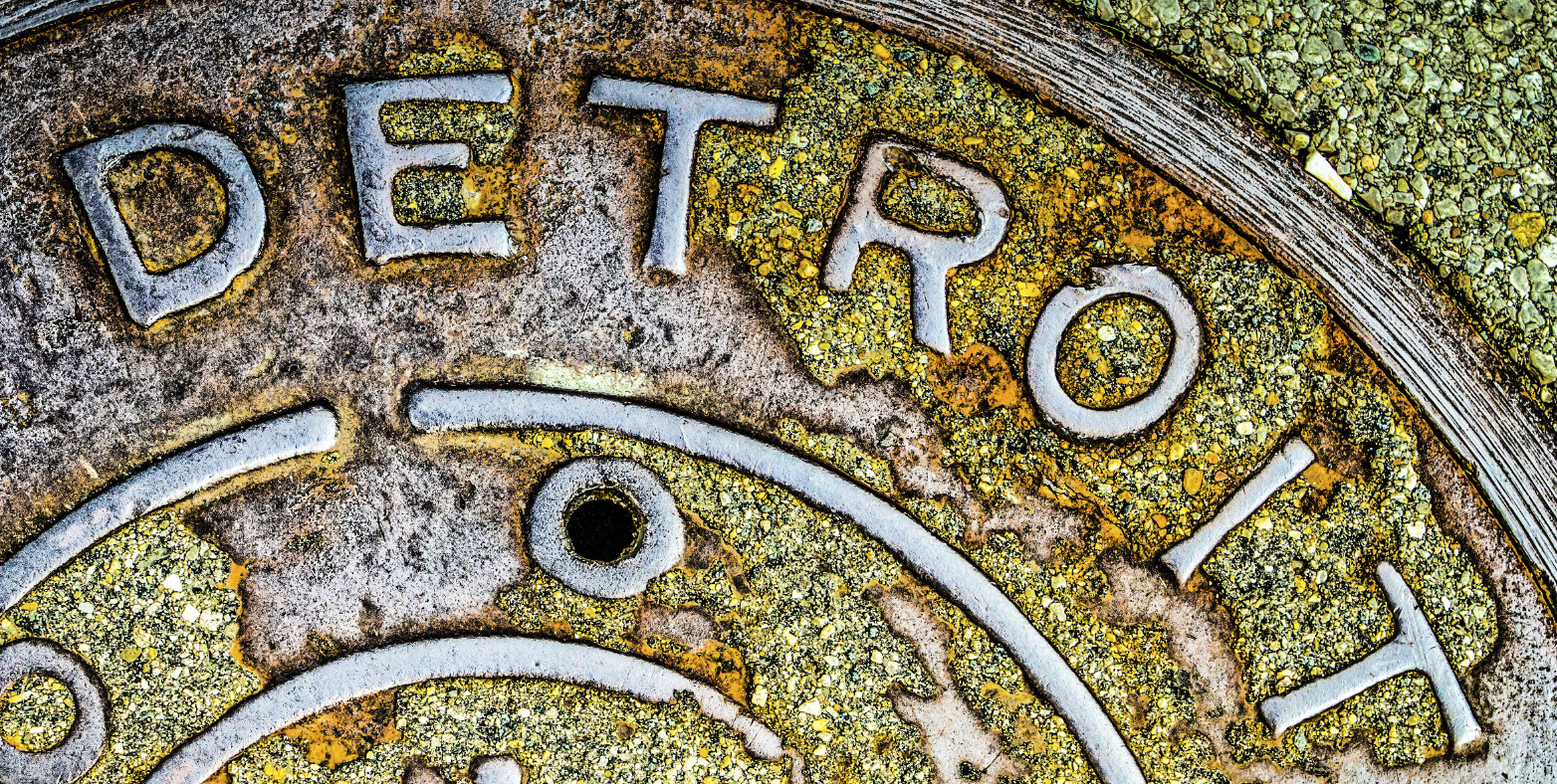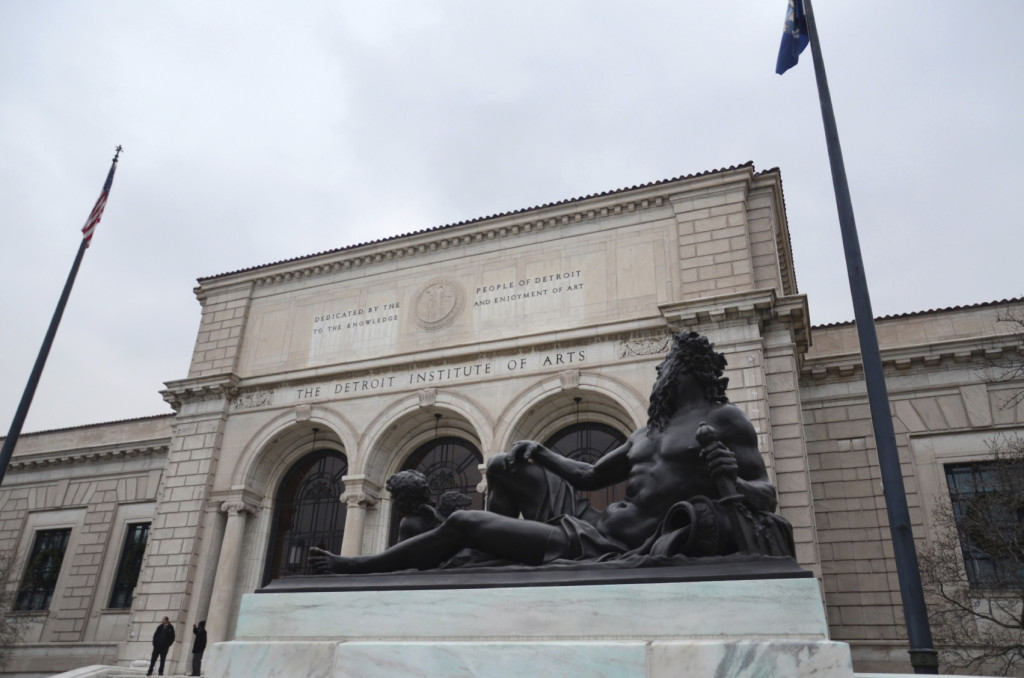
Saving a City in Crisis
Saving a City in Crisis
How an unprecedented coalition of 12 regional and national foundations helped save the City of Detroit.
On July 18, 2013, Detroit became the largest city in U.S. history to file for bankruptcy. Almost three months later, U.S. District Judge Gerald Rosen, the chief mediator appointed to midwife a settlement between the city of Detroit and its creditors, was coming to grips with the magnitude of the city’s fiscal crisis.
Without a massive infusion of cash or selling the city’s few assets, Detroit’s retirees faced a devastating loss of pension and health care benefits. Already the city’s emergency manager had engaged the auction firm Christie’s to appraise the most saleable masterpieces in the Detroit Institute of Arts (DIA). None of the museum’s city-owned treasures – not even the Van Goghs and Renoirs – were off the table.
Judge Rosen saw a global settlement of stakeholders’ claims as the only alternative to a protracted courtroom battle that would further deplete the city’s resources. But devising a settlement that would also protect the city’s art and its workers’ pensions looked unlikely, unless Rosen and his team of mediators could locate additional funding.
On a crisp afternoon in October 2013, Rosen ran into Mariam Noland, the Community Foundation for Southeast Michigan’s president, at the nearby Gateway Deli where they were both grabbing a quick lunch. “If I can help in any way,” she said, “please let me know.”
As a matter of fact, there was something she could do, he said, in a follow-up phone call. When Mariam arrived at his chambers in Detroit’s ornate federal courthouse, he outlined his plan.
An unprecedented coalition of 12 regional and national foundations committed a total of $366 million over 20 years to help save the City of Detroit.
Later, back in our office across the street, Mariam related what Rosen needed: $500 million from foundations. “I’ve got to get a few people on the phone,” she said.
As one of the largest of the nation’s 740 community foundations, we have a track record of thinking boldly about raising and leveraging financial resources to address problems in our region. But these were big numbers by anyone’s standards.
Yet within months, a consortium of regional and national foundations had pledged nearly $370 million to catalyze a global settlement that minimized pensioners’ losses and spared the DIA’s irreplaceable art collection from sale. The “Grand Bargain,” as the settlement came to be known, ultimately grew to be an $816 million deal, including $350 million from the state of Michigan and $100 million from the Detroit Institute of Arts and its supporters. The agreement brought together foundations, labor, the state legislature, retirees and the city’s art museum in an unprecedented way.
It’s a story about how philanthropic leaders were willing to operate far outside their foundations’ traditions and comfort zones. It is also a story of how some favorable circumstances and relationships in the philanthropic community in southeast Michigan, nurtured over many years, set the stage for this historic collaboration.
Beginning at our own organization, Mariam Noland has been at the helm of the Community Foundation since its founding – an interval in which its assets have grown from $2 million to nearly $800 million. Her relationships within the local and national philanthropic community are wide and deep.

The Grand Bargain helped save the collection housed here, at the Detroit Institute of Arts.
In addition to a strong community foundation, Southeast Michigan is home to a number of national and local private foundations with strong ties to Detroit. They enjoy a strong peer network, strengthened over years of collaborating on a wide variety of efforts. These bonds solidified after 2008, when philanthropy assumed a leading role in the quest to rebuild the southeast Michigan’s economy, devastated by the mortgage foreclosure crisis and a continuing hemorrhage of jobs.
Eleven local and national foundations – including the Ford Foundation, the W.K. Kellogg Foundation, the John S. and James L. Knight Foundation, The Kresge Foundation, and the Charles Stewart Mott Foundation – received national recognition for their support of the New Economy Initiative at the Community Foundation, a more than $130 million effort to diversify the regional economy and stimulate entrepreneurial growth in the wake of the crisis.
While no previous project approached the magnitude of what Judge Rosen was proposing, that history of collaboration and trust proved essential as Mariam attempted to mobilize the leaders of more than a dozen of the foundations in our network.
In a more than three-hour meeting at the courthouse on November 5, Judge Rosen and his team of mediators made a compelling case for foundation participation in the Grand Bargain. Skeptics might call it a bailout, but a global resolution of all the bankruptcy claims offered a once-in-a-lifetime opportunity to end the city’s free fall, protect pensioners, permanently secure the DIA’s independence and establish the fiscal framework for a sustainable city. The alternative was a decades-long legal battle that would at the very least spell the end of Detroit’s fragile economic recovery.
Within days, Ford Foundation President Darren Walker led by committing $125 million over 15 years. “We were interested in solving the problem. And the problem required a big response,” he would tell an NPR reporter.
Negotiations — earnest, intense and conducted in court-mandated confidentiality — ensued. A legal team from the foundations worked collaboratively for many months to draft the complex grant agreements needed to address the unprecedented circumstances.
In the end, 12 foundations committed a total of $366 million over 20 years. Signing on to the historic deal were the Community Foundation, the William Davidson Foundation, the Fred A. and Barbara M. Erb Family Foundation, the Max M. and Marjorie S. Fisher Foundation, the Ford Foundation, the Hudson-Webber Foundation, The Kresge Foundation, the W. K. Kellogg Foundation, the John S. and James L. Knight Foundation, the McGregor Fund, the Charles Stewart Mott Foundation and the A. Paul and Carol C. Schaap Foundation.
Every dollar contributed by the foundations would be earmarked to support the city pension plans, allowing the city to meet most of its obligations to retirees without liquidating its art and protecting it from such sales in the future. And at the courageous urging of union leaders, city workers and retirees – the often-overlooked heroes in the saving of Detroit – overwhelmingly agreed to pension and health care cuts to support this agreement.
The agreement also created the Foundation for Detroit’s Future, a new subsidiary foundation for which our organization was chosen to be its home. Under the oversight of our organization and board of trustees, the Foundation for Detroit’s Future will manage and administer the Grand Bargain funds over 20 years.
As he approved the settlement, Bankruptcy Judge Stephen Rhodes said the result “bordered on the miraculous.” Fast Company magazine saluted the new Foundation for Detroit’s Future as the top philanthropic idea of 2014 for “saving a city and its art.”
As Detroit moves toward the second anniversary of its emergence from bankruptcy, the Grand Bargain stands as proof that in these politically polarized times, competing interests can shake off old habits and confining perspectives to move the community they share forward.
The story of the Grand Bargain also underlines the indispensable role philanthropies can assume, particularly when working together on some of the complex problems cities face in the 21st century. Thanks to their permanent endowments, foundations have the resources and agility to respond to urgent needs, as well as the staying power to implement long-term interventions.
Community foundations like ours – permanent, place-based public charities—can be conveners and facilitators of new approaches, offering local perspective as well as the force of philanthropic dollars pooled from many individuals and businesses with a stake in the region and who share an unparalleled commitment to its prosperity.
In Detroit, these organizations—trusted partners who had practiced collaborative leadership in less dramatic situations – came together and staged an unprecedented intervention. Acting in ways both extraordinary and yet consistent with their missions, they set in motion the powerful events that saved a city.
Robin D. Ferriby is vice president of philanthropic services at the Community Foundation for Southeast Michigan. He is also an attorney and served as a chair of the foundations’ joint legal committee that crafted the Grand Bargain.
Project
Detroit's "Grand Bargain"
Philanthropy
Community Foundation for Southeast Michigan


